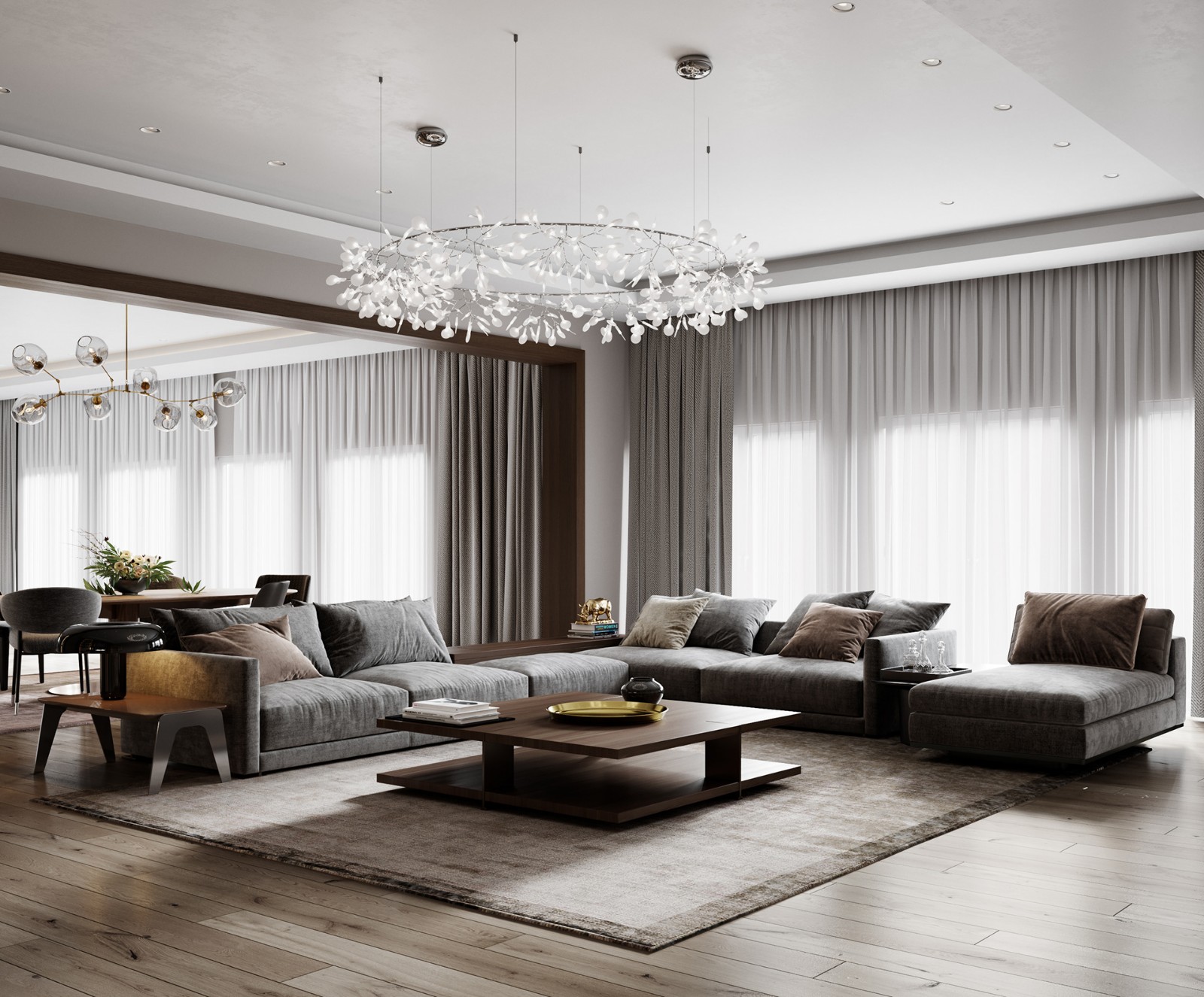Sanford Consortium for Regenerative Medicine Fentress Architects
2011-12-08 00:00
“设计一座建筑,以加强生物医学研究中最优秀的头脑之间的交流。”两年前,圣福德再生医学联合会副主席路易斯·考夫曼(LouisCoffman)向加州拉霍拉(LaJolla)新研究中心的设计团队提出了这个问题。今天这个耗资1.27亿美元、150,700平方英尺的生物医学研究实验室隆重开幕,庆祝一座专门围绕着将人们聚集在一起以促进社会和智力互动的概念而设计的建筑。
“Design a building that will enhance communications between the best minds in biomedical research.” Two years ago, Louis Coffman, vice president of the Sanford Consortium for Regenerative Medicine, asked this of the design team for the new research center in La Jolla, California. Today’s grand opening for the $127-million, 150,700-square-foot biomedical research laboratory celebrates a building designed specifically around the concept of bringing people together to promote social and intellectual interaction.
桑福德再生医学联合会(桑福德)是一个由五位世界生命科学研究领袖组成的联盟:萨尔克生物研究所、斯克里普斯研究所、桑福德·伯纳姆医学研究所、加州大学圣迭戈分校和La Jolla过敏和免疫学研究所。由芬特雷斯建筑师设计,并与戴维斯建筑师,所谓的“合作”是由兰克福德/菲尔普斯联合会开发。
The Sanford Consortium for Regenerative Medicine (Sanford) is a consortium of five world leaders in life sciences research: the Salk Institute for Biological Studies, The Scripps Research Institute, the Sanford|Burnham Medical Research Institute, the University of California, San Diego, and the La Jolla Institute for Allergy and Immunology. Designed by Fentress Architects, in association with Davis Davis Architects, the so-called “collaboratory” was developed by Lankford/Phelps Consortium.
“我们的设计以最新的研究创新和可持续性为特色,同时尊重邻近的索尔克学院的现代美学。签名办公室的“吊舱”讲述了路易斯·卡恩的非凡设计,同时也促进了研究人员之间的合作和交流。
“Our design features the latest innovations in research and sustainability, while honoring the modern aesthetics of the neighboring Salk Institute. The signature office “pods” speak to Louis Kahn’s extraordinary design while fostering collaboration and communication among researchers.”- Curtis Fentress, Principal-in-Charge of Design at Fentress Architects.
桑福德汇集了生命科学研究领域五位世界领导者的智力资源,将来自各个机构的科学家聚集在一起,在当今最有希望的科学领域之一开展联合研究和培训项目。这五个合作组织的科学家计划把重点放在干细胞的生长和分化、神经科学、心血管生物学和血细胞发育上。他们将开发创新的诊断和治疗,并发明工具和技术,以推进干细胞研究。
Sanford marshals the intellectual resources of five organizational world-leaders in life sciences research, bringing scientists from each institution together to conduct joint research and training programs in one of today’s most promising arenas of science. Scientists from the five collaborating organizations plan to focus on stem cell growth and differentiation, neuroscience, cardiovascular biology, and blood cell development. They will develop innovative diagnostics and therapies, and invent tools and technologies to advance stem cell research.
这座标志性建筑位于圣迭戈生物技术集群的中心地带,被戏称为“台地”,位于索尔克学院(Salk Institute)和加州大学校园(UCSD)附近的一个重要地点,为人们设计。芬太斯建筑师被要求设计一座建筑,将研究人员从他们的日常生活中拉出来,并鼓励他们相互交流。
Design For People | Located on a premier site adjacent to the Salk Institute and UCSD campus, the signature building is in the heart of San Diego’s biotechnology cluster, an area nicknamed “the Mesa.” Fentress Architects was challenged to design a building that would pull researchers out of their routines and encourage them to interact with one another.
考虑到这个想法,设计师们改变了标准实验室模块的布局,从北到南,从东到西,改变了研究人员在整个建筑中移动的方式。这种循环设计的转变增加了更频繁的见面和交融的机会。此外,这一转变在建筑的每一端都为共用的两层休息室创造了空间,连接了建筑的各个层次,并鼓励了研究人员之间的互动。楼层之间的楼梯被战略性地设计成“创造性碰撞”的区域,人和思想在这里交汇。
With that idea in mind, designers shifted that standard lab module placement from north to south, and east to west, altering the way researchers could move throughout the building. This circulatory design shift increases the opportunity for more frequent meet-ups and mingling. In addition, the shift created spaces on each end of the building for shared two-story break rooms, which interconnect all levels of the building and encourage interaction among researchers. Stairways between floors were strategically designed as areas of “creative collision” where people and ideas intersect.
他说:“这座大楼完全是关于用户体验的。我们的任务是设计一个合作可以蓬勃发展的建筑,不同的组织可以在一个屋檐下团结在一起,为一个共同的目标而团结。我们为这一结果感到自豪,并为能参与其中而感到荣幸。“-芬太斯建筑师项目设计师罗宾·D·奥特
“This building is all about user experience. We were tasked to design a building where collaboration could thrive, where different organizations could come together under one roof and unite for a common goal. We are proud of the result, and honored to have been involved.”- Robin D. Ault, Project Designer, Fentress Architects
另一个主要的设计元素包括高级研究员和调查人员在桑福德的私人办公室“吊舱”。从外部人行道悬臂,豆荚提供受保护的景观,俯瞰托瑞松林高尔夫球场,历史性的滑雪场和太平洋。
Another major design element includes private office “pods” for senior researchers and investigators at Sanford. Cantilevered from exterior walkways, the pods offer protected views that overlook the Torrey Pines Golf Course, the historic Gliderport and the Pacific Ocean.
桑福德也有一个新的咖啡馆和150个座位的礼堂,独立于实验室大楼。客户将礼堂设想为科学家们教育社区、向公众伸出援手的场所,并提供一个聚集和讨论的焦点。外面的广场将咖啡厅和礼堂与主要的实验室建筑隔开,让研究人员有机会走出实验室的工作环境。
Sanford also has a new café and 150-seat auditorium, separate from the laboratory building. The client envisioned the auditorium as a place for scientists to educate the community, reach out to the public, and provide a focal point for gathering and discussion. An outside plaza divides the café and auditorium from the main laboratory building, allowing researchers a chance to get outside the working environment of the lab.
环保领袖桑福德再生医学联合会正在努力实现LEED黄金认证。通往大楼正门的一座人行天桥经过一片恢复的橘色疯树景观。桉树,从网站上砍下来,保存和重用作为签名元素。这些树木将被薄雾浇灌作为护士原木,以再生本地植物的生命。其他绿色策略包括在露天地区使用可循环利用的山核桃芯片,而不是覆盖,以及在停车场中加入生物瓦片来自然过滤水。
Green Leader | The Sanford Consortium for Regenerative Medicine is on track to achieve LEED Gold certification. A pedestrian bridge leading to the main entrance of the building passes over a restored landscape of orange-barked madrone trees. Eucalyptus trees, cut from the site, were saved and reused as signature elements. These trees will be mist-irrigated as nurse logs for the regeneration of native plant life. Other green strategies include utilizing recyclable pecan chips in open areas instead of mulch, and incorporation of bioswales in the parking lots to filter water naturally.
 举报
举报
别默默的看了,快登录帮我评论一下吧!:)
注册
登录
更多评论
相关文章
-

描边风设计中,最容易犯的8种问题分析
2018年走过了四分之一,LOGO设计趋势也清晰了LOGO设计
-

描边风设计中,最容易犯的8种问题分析
2018年走过了四分之一,LOGO设计趋势也清晰了LOGO设计
-

描边风设计中,最容易犯的8种问题分析
2018年走过了四分之一,LOGO设计趋势也清晰了LOGO设计






















































